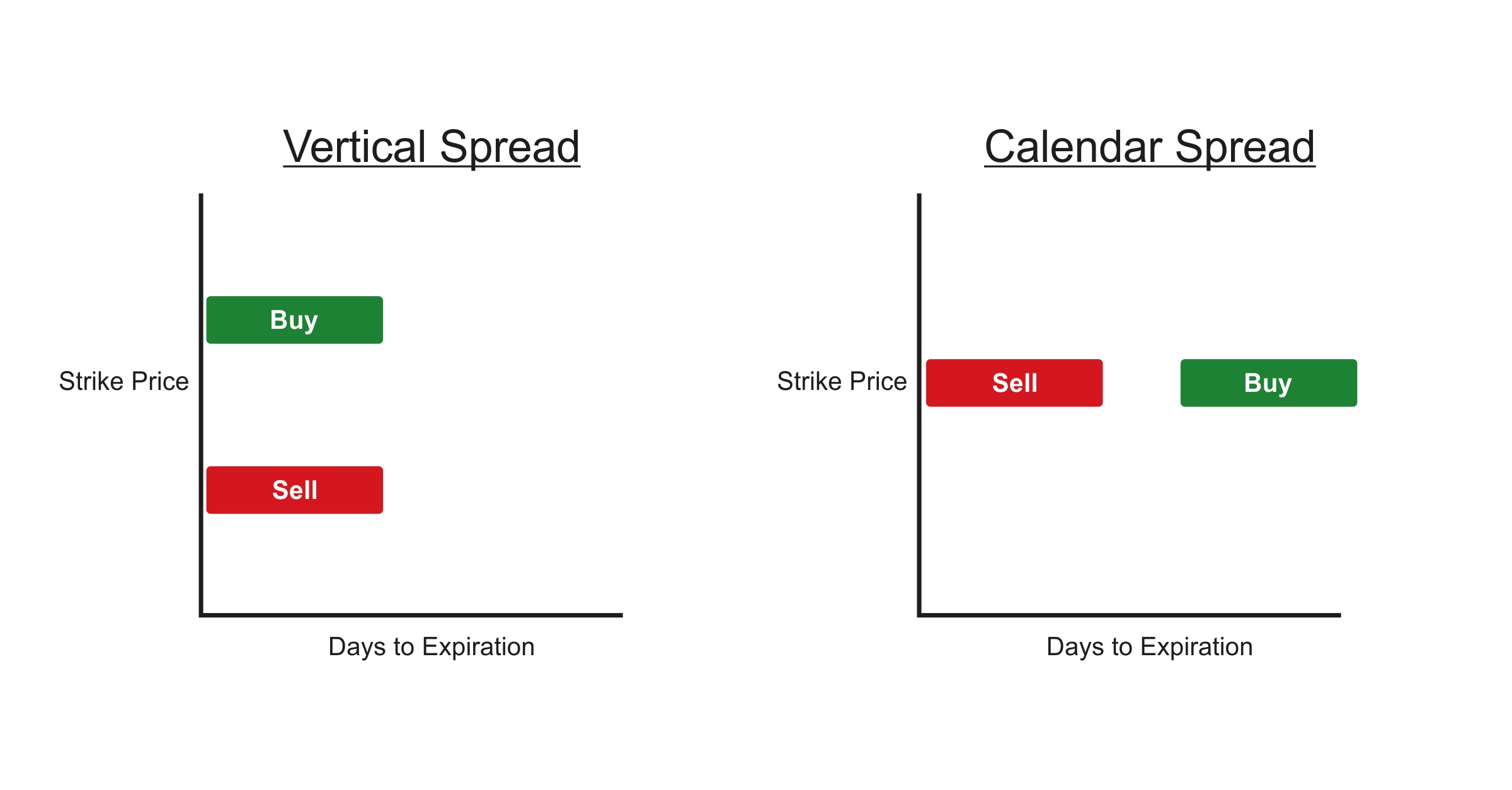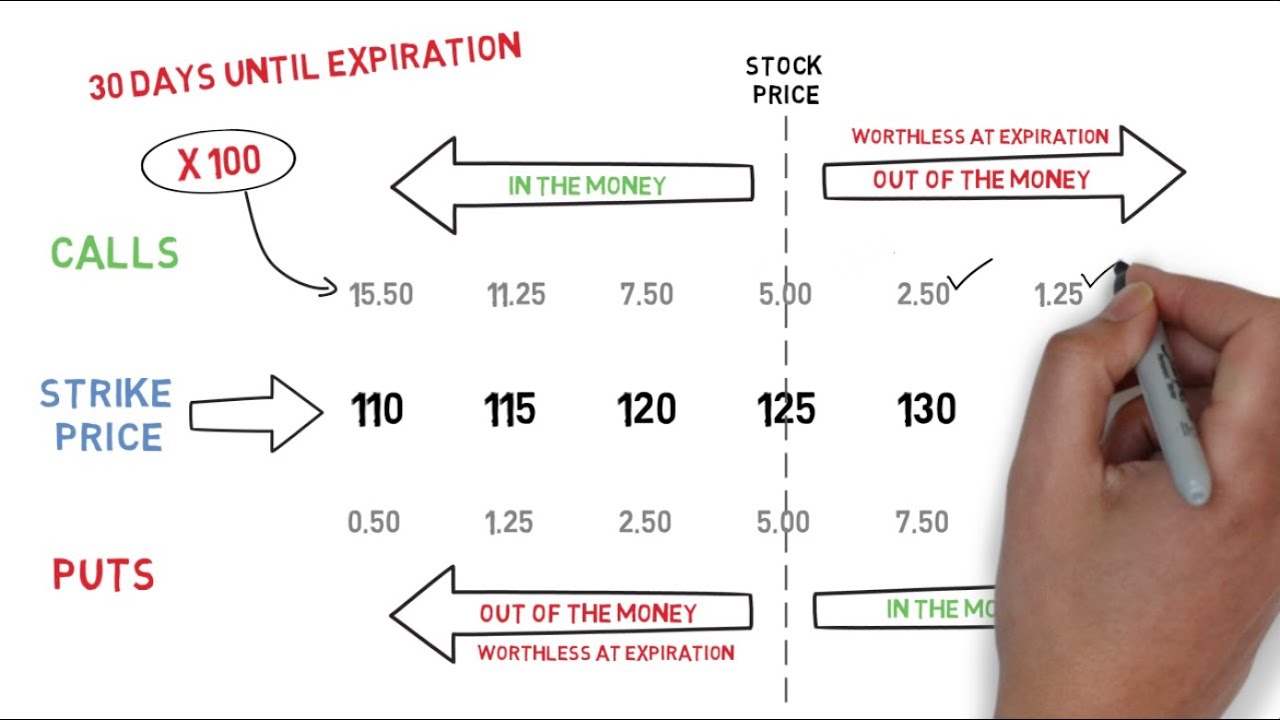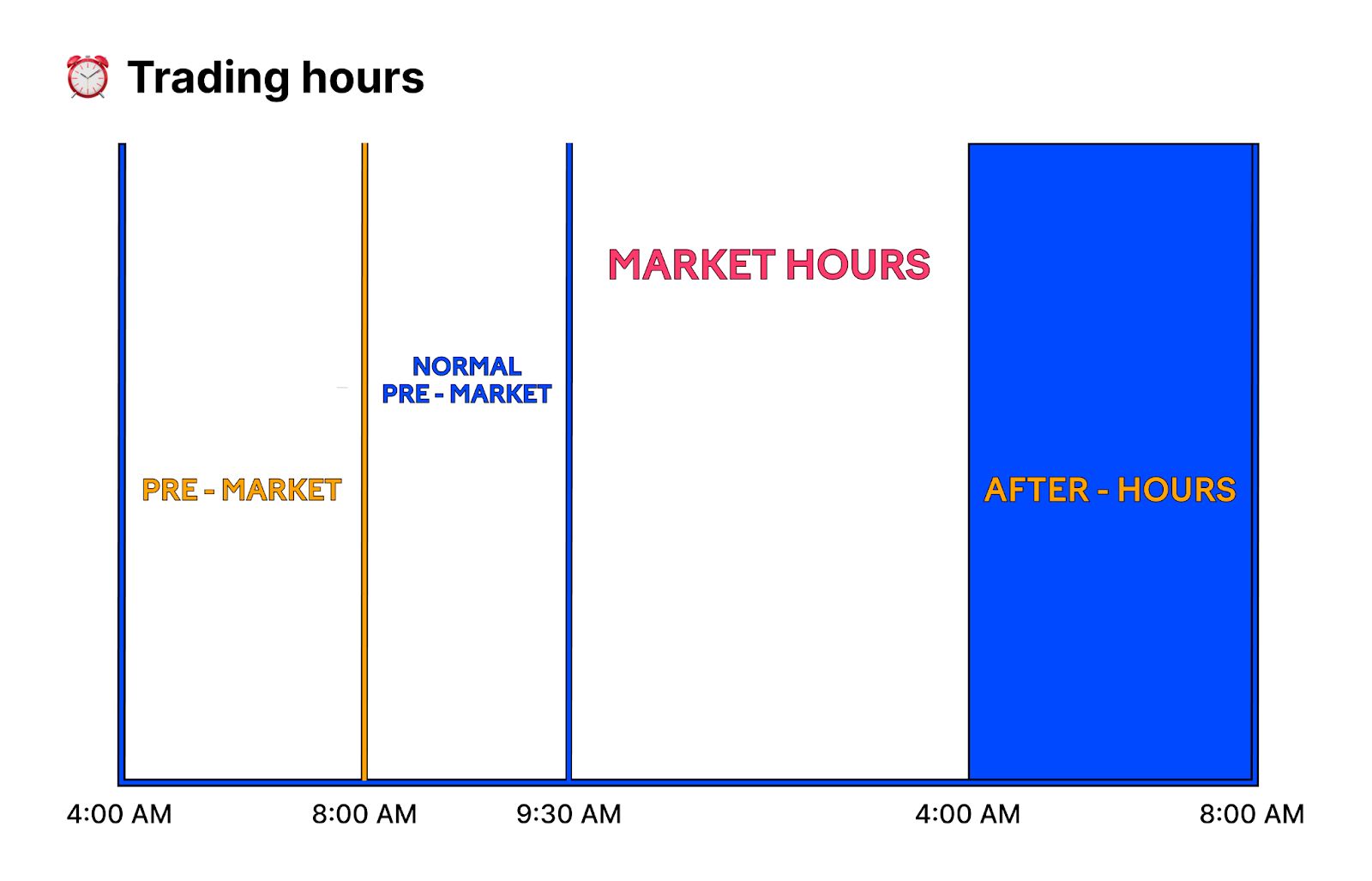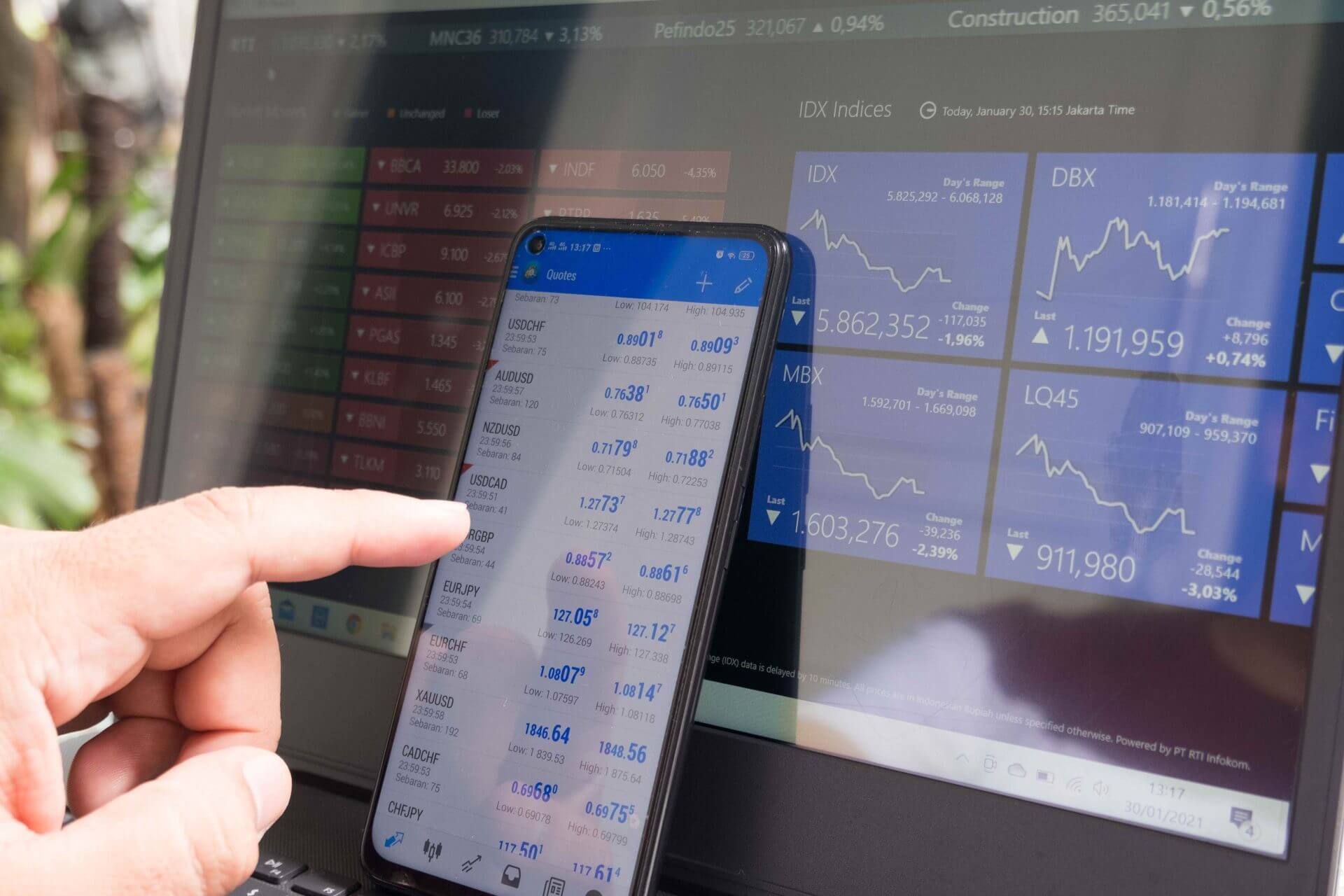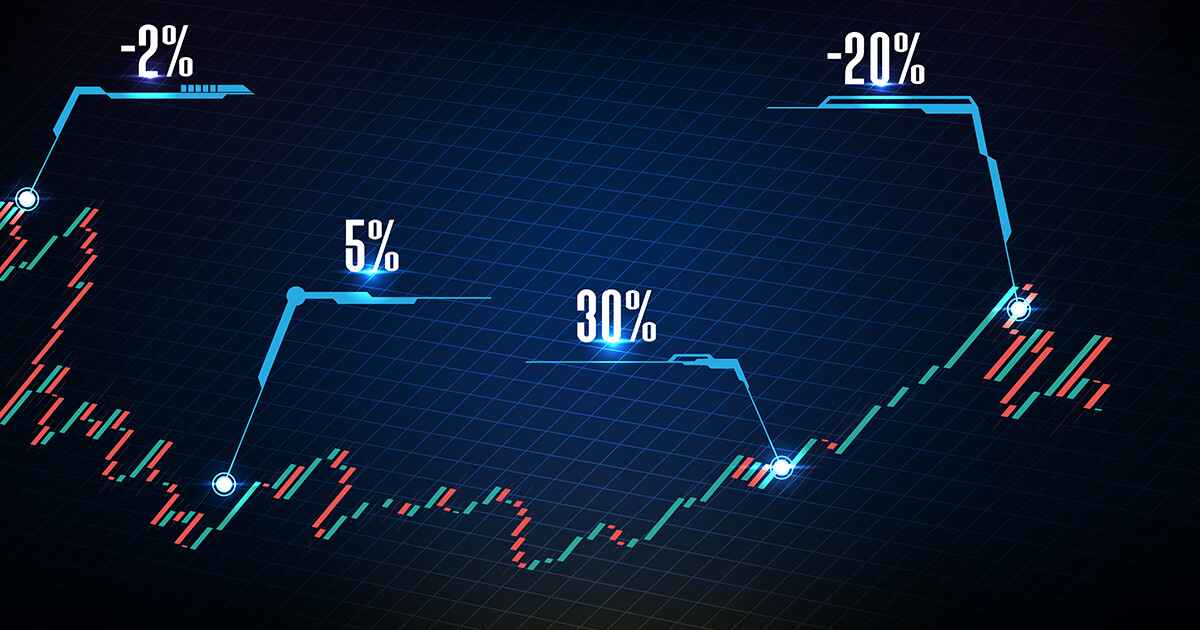Introduction
Welcome to the world of trading! If you’re new to the financial markets, one term that you’re likely to come across is “spread.” Spread is a fundamental concept in trading that impacts various aspects of the market, from stocks to forex and commodities. Understanding what spread means and how it affects your trades is crucial for any aspiring or experienced trader.
In simple terms, a spread refers to the difference between the buying and selling prices of an asset. It represents the cost of executing a trade and acts as a fee paid to the broker. While it may seem like an additional cost, spreads play a vital role in providing liquidity and ensuring efficient trading on the market.
So how does spread work? Let’s say you’re interested in trading a particular stock. The bid price represents the maximum price a buyer is willing to pay, while the ask price represents the minimum price a seller is willing to accept. The difference between these two prices is the spread. When you buy an asset, you will pay the ask price, and when you sell it, you will receive the bid price, resulting in a transaction cost or spread.
There are two main types of spreads: fixed spreads and variable spreads. Fixed spreads remain constant regardless of market conditions, providing traders with predictability in terms of costs. On the other hand, variable spreads fluctuate based on market volatility, expanding during periods of high volatility and narrowing during calmer market conditions. Understanding the type of spread offered by your broker is crucial in managing your trading costs effectively.
Trading with spreads has its advantages. Firstly, spreads provide transparency as they are clearly delineated, allowing traders to know the exact costs of executing their trades. Secondly, spread trading can offer better pricing and tighter bid-ask spreads compared to alternative pricing models like commissions. Additionally, spreads help maintain liquidity in the market by incentivizing traders to provide liquidity and reducing the impact of large buy or sell orders.
However, there are also some drawbacks to trading with spreads. The most obvious one is the additional cost incurred with each trade. Depending on the market conditions and the type of spread, the costs can vary significantly. Secondly, spreads can widen during high volatility periods, making it more challenging to execute trades at desired prices. It’s essential to consider these factors and choose the right trading strategy that aligns with your risk tolerance and trading goals.
Several factors affect the size of spreads. Market volatility, trading volume, and liquidity of the asset all play a role in determining the width of the spread. Understanding these factors can help you anticipate potential changes in spreads and make informed trading decisions.
Now that we’ve covered the basics of spreads, let’s dive deeper into the intricacies of trading with spreads and explore some tips to maximize your trading success.
Definition of Spread
Spread refers to the difference between the buying and selling prices of a financial asset in the market. It is essentially the cost incurred when executing a trade and represents the profit or commission earned by brokers. The concept of spread applies to various financial instruments, such as stocks, forex, commodities, and indices.
When you trade an asset, you will encounter two prices: the bid price and the ask price. The bid price is the highest price a buyer is willing to pay for the asset, while the ask price is the lowest price a seller is willing to accept. The spread is calculated by taking the difference between these two prices.
For example, let’s say the bid price for a stock is $50, and the ask price is $51. The spread in this case would be $1. This means that if you want to buy the stock, you would have to pay $51, while if you want to sell the stock, you could receive $50.
The size of the spread can vary depending on several factors, such as the liquidity of the asset, market conditions, and the broker you are trading with. Generally, more liquid assets tend to have narrower spreads, as there is a higher volume of buyers and sellers competing in the market. On the other hand, less liquid assets may have wider spreads, as there may be fewer participants trading the asset.
It is important to note that there are two main types of spreads: fixed spreads and variable spreads. Fixed spreads remain constant and do not change regardless of market conditions. This provides traders with transparency and predictability in terms of their trading costs. Conversely, variable spreads fluctuate based on market volatility. During periods of high volatility, spreads tend to widen, while during calmer market conditions, spreads narrow.
Understanding and accounting for the spread is crucial for traders, as it directly affects the profitability of their trades. When you open a trade, you will immediately be at a slight disadvantage due to the spread. The price of the asset needs to move in your favor by at least the width of the spread in order for the trade to be profitable.
The spread acts as a built-in cost of trading and is a source of revenue for brokers. It is important to consider the spread, along with other factors such as commissions, fees, and slippage, when calculating the overall cost of executing trades and managing your trading strategy.
In summary, spread is the difference between the bid and ask prices of a financial asset. It represents the cost of executing a trade and affects the profitability of trades. Understanding the concept of spread is essential for traders to effectively analyze market conditions, manage trading costs, and make informed decisions.
How Spread Works
Understanding how spread works is essential for any trader looking to navigate the world of financial markets. Spread plays a crucial role in determining the cost of executing trades and ultimately affects the profitability of trading strategies. Let’s explore how spread works in more detail.
When you trade a financial instrument, such as a stock or currency pair, you will encounter two prices: the bid price and the ask price. The bid price represents the highest price at which buyers are willing to purchase the asset, while the ask price represents the lowest price at which sellers are willing to sell the asset.
The difference between the bid and ask prices is referred to as the spread. It is essentially the cost of trading and acts as compensation for market makers and brokers who facilitate the buying and selling of assets. Brokers typically earn their profits from the spread rather than charging explicit commissions on each trade.
For example, let’s say you’re interested in trading a particular stock. The bid price is $50, and the ask price is $51. This means that if you want to buy the stock, you would have to pay the higher ask price of $51. Alternatively, if you want to sell the stock, you would receive the lower bid price of $50. The difference of $1 between the bid and ask prices is the spread.
The spread can be expressed in terms of pips, points, or other units depending on the market and asset being traded. It is important to note that the size of the spread can vary depending on factors such as the liquidity of the asset, the trading volume, and market conditions.
Fixed spreads and variable spreads are the two main types of spreads. Fixed spreads remain constant regardless of market conditions, providing traders with predictability in terms of costs. On the other hand, variable spreads fluctuate based on market volatility. During periods of high volatility, spreads tend to widen, while during calmer market conditions, spreads narrow.
Spread is an inherent cost associated with trading and needs to be taken into account when calculating the profitability of trades. When you initiate a trade, you are immediately at a slight disadvantage due to the spread. In order to make a profit, the price of the asset needs to move in your favor by at least the width of the spread.
It’s important to consider the spread, along with other factors such as commissions, fees, and slippage, when planning and executing your trading strategies. By factoring in the spread, you can better manage your risk and make more informed decisions regarding entry and exit points for your trades.
In summary, spread is the difference between the bid and ask prices of a financial asset. It represents the cost of trading and affects the profitability of trades. Understanding how spread works and accounting for it in your trading strategy is vital for successful trading in the financial markets.
Types of Spread
When it comes to trading, there are two main types of spreads that traders should be aware of: fixed spreads and variable spreads. Each type has its own advantages and considerations, so let’s delve into the details of these two types of spreads.
1. Fixed Spreads
Fixed spreads, as the name suggests, remain constant regardless of market conditions. The spread width is predetermined by the broker and does not change throughout the trading day, regardless of factors such as volatility or liquidity. This type of spread provides traders with transparency and predictability in terms of their trading costs.
Fixed spreads are particularly beneficial in stable market conditions where volatility is low. Traders can accurately calculate their costs and easily determine their risk to reward ratios. This makes it easier to implement specific trading strategies and manage risk effectively.
2. Variable Spreads
Variable spreads, on the other hand, fluctuate based on market conditions and are influenced by factors such as volatility and liquidity. These spreads widen or narrow in response to market dynamics, with wider spreads experienced during times of increased volatility and narrower spreads during calmer market conditions.
The advantage of variable spreads is that they tend to be relatively tighter during periods of low volatility. This means that traders can potentially benefit from lower transaction costs and have a better chance of getting their desired entry and exit prices. However, it’s important to note that variable spreads can widen significantly during times of high market volatility, which can affect the overall cost of trading.
Choosing the right type of spread depends on your trading style and preferences. If you prefer a more predictable and stable trading environment with fixed costs, a fixed spread might be suitable for you. On the other hand, if you can handle and adapt to market volatility and prefer potentially lower costs during calmer market conditions, a variable spread could be preferable.
It’s also worth mentioning that some brokers offer a hybrid model where they provide both fixed and variable spreads. This allows traders to choose between the two depending on market conditions or trade requirements, providing flexibility and accommodating different trading strategies.
Ultimately, understanding the different types of spreads and their implications is essential for traders. It enables them to choose a spread type that aligns with their trading goals, risk tolerance, and market conditions they intend to trade in. By considering the pros and cons of each type, traders can make informed decisions and optimize their trading strategies for consistent profitability.
Advantages of Trading with Spreads
Trading with spreads offers several advantages that make it a popular choice among traders in various financial markets. Understanding these advantages can help you make informed decisions about your trading strategy and approach. Let’s explore some of the benefits of trading with spreads.
1. Transparency in Trading Costs
One significant advantage of trading with spreads is the transparency it provides in terms of trading costs. The spread is clearly defined and quantifiable, allowing traders to know the exact amount they will pay or receive when executing a trade. This transparency enables better planning and risk management, as traders can accurately calculate their potential profits or losses.
2. Competitive Pricing
Spread trading provides competitive pricing compared to alternative pricing models like commissions. Rather than charging explicit commissions on each trade, brokers make their profits from the spread. This can result in lower overall costs for traders, especially for those who trade in high volumes. The ability to access tight bid-ask spreads can improve trading profitability, allowing traders to enter and exit positions at more favorable prices.
3. Liquidity and Market Efficiency
Spreads play a vital role in maintaining liquidity and market efficiency. By incentivizing market participants to provide liquidity, spreads ensure there are always buyers and sellers available in the market. This reduces the impact of large buy or sell orders and enhances the overall trading experience for participants. Additionally, tighter bid-ask spreads allow for smoother price discovery and execution, leading to more efficient markets.
4. Availability of Various Trading Strategies
Trading with spreads allows for the implementation of various trading strategies. Whether you are a scalper looking for quick profits from small price movements or a swing trader aiming for larger market swings, spreads provide the flexibility to execute these strategies effectively. The ability to plan your trades based on known and consistent costs allows for better risk management and strategy execution.
5. Diversification Opportunities
Trading with spreads opens up a wide range of asset classes and markets for traders to diversify their portfolios. Whether it’s stocks, forex, commodities, or indices, spreads are applicable to various financial instruments. This allows traders to explore different markets, access new opportunities, and spread their risk across multiple assets.
6. Availability of Fixed and Variable Spread Options
There is flexibility in choosing the type of spreads to trade with. Brokers offer both fixed spreads and variable spreads, allowing traders to select the option that suits their trading style and preferences. Fixed spreads provide stability and predictability in trading costs, whereas variable spreads can offer lower costs during periods of low volatility. The availability of these options caters to the diverse needs and preferences of individual traders.
Trading with spreads provides transparency, competitive pricing, liquidity, and a variety of trading strategies. By understanding and leveraging these advantages, traders can enhance their trading experience and potentially improve their profitability in the financial markets.
Disadvantages of Trading with Spreads
While trading with spreads offers several advantages, it’s essential to be aware of the potential disadvantages. Understanding these drawbacks can help you make informed decisions and effectively manage your trading strategy. Let’s explore some of the disadvantages of trading with spreads.
1. Additional Cost of Trading
One of the most apparent disadvantages of trading with spreads is the additional cost incurred with each trade. When entering a position, traders immediately face a deficit equivalent to the width of the spread. This means that the asset’s price must move favorably for the trader to offset the spread cost and make a profit. For some traders, especially those engaging in high-frequency trading or scalping strategies, the cumulative impact of spreads can significantly impact overall profitability.
2. Spreads Can Widen during Volatile Conditions
Spreads have a tendency to widen during periods of high market volatility. When market conditions become turbulent, bid-ask spreads tend to expand as liquidity providers and market makers adjust their prices to reflect the heightened risk. This can make it more challenging for traders to execute trades at desired prices, resulting in potentially higher transaction costs and slippage.
3. Limitations on Trading in Illiquid Assets
Trading with spreads may present limitations when it comes to illiquid assets. The spread width for less liquid assets tends to be wider compared to more liquid assets. This can make it more challenging to enter and exit positions in a timely manner, potentially resulting in higher trading costs and greater difficulty in achieving desired price levels. Traders who focus on specific niche markets or less commonly traded assets should be particularly mindful of these limitations.
4. Variable Spreads can be Unpredictable
While variable spreads offer lower costs during periods of calm market conditions, they can be unpredictable during times of increased volatility. Rapid fluctuations in market prices can cause spreads to widen significantly, which may lead to unexpected transaction costs for traders. This unpredictability can make it more challenging to plan and execute trades accurately, particularly for strategies that rely on precise entry and exit points.
5. Impact of Broker Choice
The choice of broker can have a significant impact on the spreads offered. Different brokers have different pricing models and spreads for the same financial instruments. It’s important for traders to research and compare brokers to ensure they are getting competitive and favorable spreads. Poor broker selection can result in higher trading costs and potentially affect trading profitability.
Despite these disadvantages, trading with spreads remains popular among traders due to its transparency, competitive pricing, and flexibility. It’s crucial for traders to carefully consider these drawbacks and plan their trading strategies accordingly, taking into account the potential impact of spreads on their overall trading costs and profitability.
Factors Affecting Spread
Several factors can influence the size and variability of spreads in the financial markets. Understanding these factors is crucial for traders as it can help them anticipate the potential changes in spreads and make informed trading decisions. Let’s explore some of the key factors that affect spreads:
1. Market Volatility
Market volatility is one of the primary factors that affect spreads. Volatility refers to the degree of price fluctuations in the market. During periods of high volatility, spreads tend to widen as market participants perceive increased risk and adjust their pricing accordingly. This wider spread compensates for the potentially higher risk and uncertainty associated with more volatile market conditions.
2. Asset Liquidity
The liquidity of an asset also plays a significant role in determining the spread. Liquidity refers to the ease with which an asset can be bought or sold in the market. Highly liquid assets, such as major currency pairs and heavily traded stocks, tend to have narrower spreads due to the large number of buyers and sellers actively participating in the market. In contrast, less liquid assets may have wider spreads as there are fewer participants trading the asset, creating a greater discrepancy between bid and ask prices.
3. Trading Volume
The trading volume can impact the size and stability of spreads. Higher trading volumes typically lead to tighter spreads as there is a greater number of market participants actively trading the asset, leading to increased competition and better pricing. Conversely, lower trading volumes can result in wider spreads as there may be fewer buyers and sellers in the market.
4. Market Manipulation and Order Flow
In some cases, market manipulation or significant imbalances in order flow can affect spreads. Market manipulators or large institutional orders can disrupt the balance of supply and demand for a particular asset, leading to wider spreads. These disruptions may be temporary but can significantly impact trading costs and execution in the short term.
5. Broker Policies
Each broker has its own policies and business models, which can impact the spreads they offer. Some brokers may offer fixed spreads, ensuring stability and transparency in trading costs. Others may provide variable spreads that fluctuate based on market conditions. Understanding the broker’s spreads and policies is essential when considering the overall cost of trading and choosing a broker that aligns with your trading needs.
It’s important to consider these factors when assessing and comparing spreads across different markets and trading instruments. By understanding the dynamics of these factors, traders can anticipate potential changes in spreads and adjust their trading strategies accordingly. Additionally, staying informed about market news and events that can impact volatility and liquidity can also help traders make more educated decisions regarding their trades.
Tips for Trading with Spreads
Trading with spreads can be a profitable and efficient way to navigate the financial markets. To maximize your success, it’s important to keep certain tips in mind when engaging in spread trading. Here are some key tips to enhance your trading experience:
1. Understand the Spread Structure
Before you start spread trading, take the time to fully understand the spread structure of the market you are trading. Familiarize yourself with the bid and ask prices, as well as the width of the spread. This knowledge will help you calculate your potential costs and assess the profitability of your trades more accurately.
2. Choose the Right Broker
Selecting the right broker is crucial when trading with spreads. Research and compare different brokers to find one that offers competitive spreads and reliable execution. Consider factors such as their pricing model, liquidity providers, and overall reputation in the industry. A reputable broker with tight spreads can significantly reduce your trading costs and improve your trading experience.
3. Monitor Market Volatility
Stay updated on market volatility and how it can influence spreads. Higher volatility tends to cause spreads to widen, which can impact your trading costs. Monitor economic news, earnings releases, and other events that can affect market volatility. Being aware of potential volatility can help you adjust your trading strategy accordingly and be prepared for changes in spreads.
4. Plan Your Risk Management
Implementing effective risk management strategies is essential when trading with spreads. Determine your acceptable risk levels and set stop-loss orders to protect against adverse price movements. Consider position sizing and leverage to ensure you’re not risking too much of your trading capital on any single trade. By managing your risk effectively, you can mitigate potential losses and protect your trading account.
5. Use Limit Orders
When trading with spreads, consider using limit orders to enter and exit trades. Placing limit orders allows you to specify the desired price at which you want to execute your trades. This can help you avoid entering or exiting a trade at a less favorable price due to wider spreads during periods of volatility.
6. Keep an Eye on Trading Volume
Monitoring trading volume can provide valuable insights into market liquidity and potential changes in spreads. Higher trading volumes generally result in tighter spreads, while lower volumes can lead to wider spreads. Stay aware of the trading volume in the assets you’re trading, as it can impact both the execution quality and the costs of your trades.
7. Practice on a Demo Account
If you’re new to spread trading or want to test new strategies, consider practicing on a demo account. Most brokers offer demo accounts that allow you to trade with virtual funds in real market conditions. This allows you to gain experience and refine your trading approach without risking your own capital.
Keep in mind that spread trading involves risks, and it’s important to thoroughly educate yourself on the intricacies of spread trading before committing real funds. Continuously learning and adapting your strategies based on market conditions and feedback is crucial for long-term success in spread trading.
Conclusion
Spread trading is a fundamental aspect of the financial markets that impacts various trading instruments, from stocks to forex and commodities. Understanding spreads and their implications is crucial for traders looking to navigate the complexities of trading effectively. Throughout this article, we have explored the definition of spread, how it works, and the advantages and disadvantages of trading with spreads. We have also discussed the factors that influence spreads and provided some key tips for successful spread trading.
Trading with spreads offers transparency in trading costs, competitive pricing, and the flexibility to implement various trading strategies. Spreads play a vital role in maintaining liquidity and market efficiency, ensuring smooth transactions and better pricing. However, it’s important to consider the potential disadvantages of trading with spreads, such as the additional cost of trading and potential spread widening during volatile market conditions.
Factors such as market volatility, asset liquidity, trading volume, market manipulation, and broker policies impact spreads in the financial markets. Being aware of these factors can help traders anticipate changes in spreads and make informed trading decisions.
To optimize your spread trading experience, it’s important to choose the right broker, monitor market conditions, plan your risk management, and stay updated on trading volume. Utilizing limit orders and practicing on a demo account can also contribute to your success as a spread trader.
Spread trading requires knowledge, skill, and continuous learning. It is important to stay informed about market trends, economic indicators, and news events that can influence spreads. By staying educated and adapting your strategies to changing market conditions, you can enhance your trading performance and aim for consistent profitability.
In conclusion, trading with spreads provides an opportunity for traders to access various financial markets, manage costs more effectively, and diversify their portfolios. With a solid understanding of spreads and the tips outlined in this article, you can navigate the markets with confidence and work towards achieving your trading goals.







